My colleague, Simon Ouderkik, recorded a REALLY interesting interview with Stephen Levin of Zapier and Emilie Schario of Gitlab on organizing data org in a company, job titles, career ladders, and other important stuff.
-

On oranizing a data org in a company, job titles, and more
April 16, 2020 -

If there is only one document you can read about data visualization, this is the one
April 7, 2020I’m sorting my teaching material, and I found this gem. The UK Government Statistical Service published a guideline for effective data visualization and tables. If you know a busy person who doesn’t have time to study data visualization and can only read one document, this document is for them (it has less than 40 pages full of examples). Click o the image above to go to the guideline
-

Data giraffe is sometimes a feature, not a problem
April 7, 2020I wrote about data giraffes two weeks ago. Usually, “data giraffes” are a problem and we need to work hard in order to solve it. Sometimes, they are a useful feature. Take a look at this NYT front page that shows the number of new unemployment applications in the United States over the time
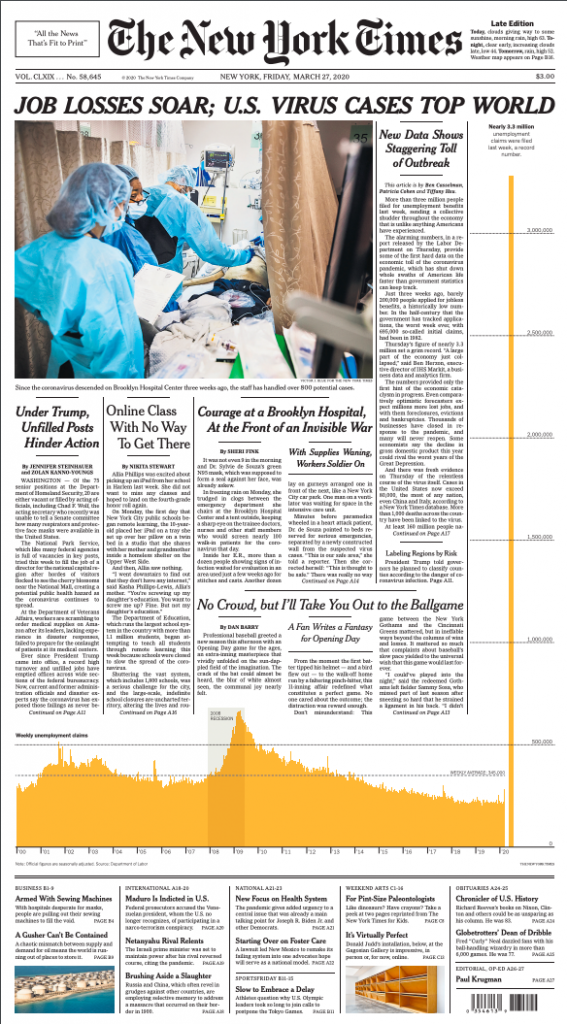
And this is the pseudochartchart version of the same data
https://twitter.com/davidgura/status/1245704384215945216
Credits: I’ve found these examples on Stott Berkun’s page.
-

Everything is NOT just fine (repost)
April 5, 2020My job wasn’t affected by the COVID madness in almost any way. I used to work from home before, and I work from home now, none on my customers cancelled any projects, the health system in Israel is still functioning, all of my relatives are in good health, everything is just fine! I know how unusual I am in the current world, with the skyrocketing unemployment, non-functioning governments, and three-digit body counts. I was about to write about that, but then I read AnnMaria’s post.
You should read it too
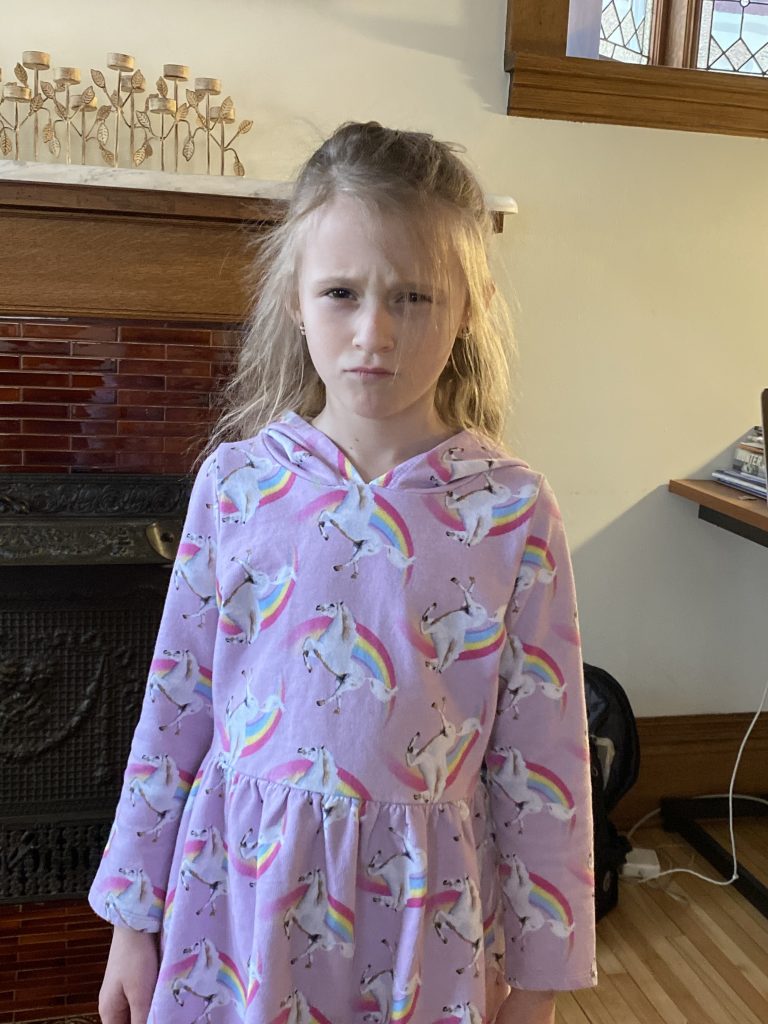
I’ve read a lot of cheery tweets that said something like, “Buffy, Biff and I are isolated at home with our terrier, Boo. Here’s a picture. Isn’t he cute? We played card games, then I baked this three-course meal I saw on Pinterest. Biff is taking this time to finally become proficient in Mandarin with…
-
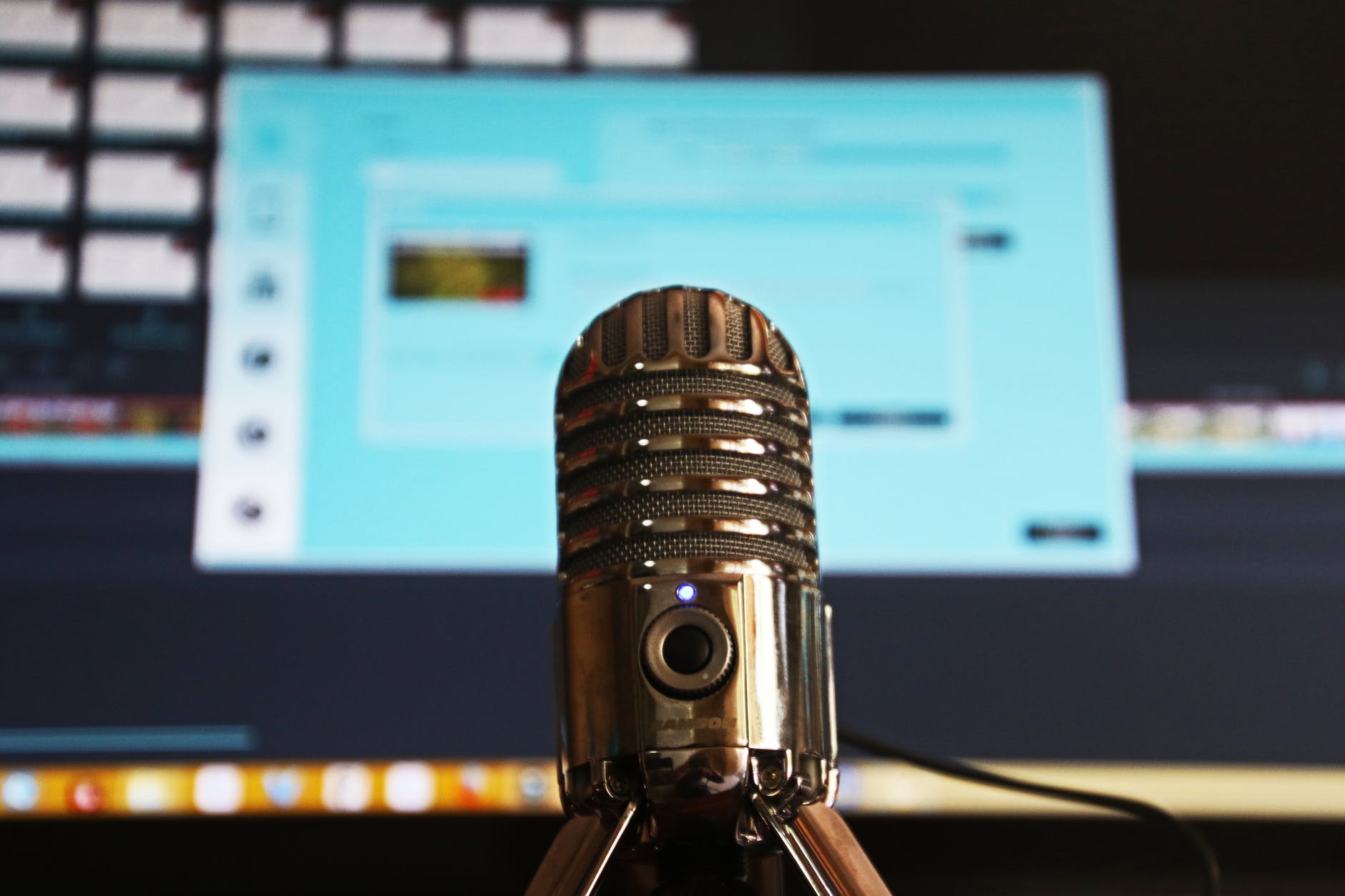
Blogging isn't what it used to be. Podcasting is on the rise
April 2, 2020More than two years ago, I took a look at Google Trends for three phrases “start a blog”, “create a blog”, and “create a site”. I was surprised by the high volume of blog searches, compared to “create a site”.
Today, I decided to go back to Google Trends and to add the new rising star: podcasting.

It looks like podcasting starts its exponential growth, while the blogging continues its slow but steady decline. I will be unsurprised if, in 2022, the green, podcasting line will surpass the other lines in this graph. Let’s wait and see.
-

A super-important read on the COVID-19 situation. I'm finally convinced
March 22, 2020Until now I was very sceptical about the COVID-19 measures taken by many the governments around the world, especially the Israeli one. Today, finally, I read a post that addressed the three issues I was pointing to:
- This first lockdown will last for months, which seems unacceptable for many people.
- A months-long lockdown would destroy the economy.
- It wouldn’t even solve the problem, because we would be just postponing the epidemic: later on, once we release the social distancing measures, people will still get infected in the millions and die.
- My biggest concern: Either a lot of people die soon and we don’t hurt the economy today, or we hurt the economy today, just to postpone the deaths.

There’s no point rephrasing here the original post,just go and read it. I’m convinced. Thank you, Tomas Pueyo

Go and read. The image is clickablehttps://medium.com/@tomaspueyo/coronavirus-the-hammer-and-the-dance-be9337092b56
-

Data scientist? Thinking of working in a distributed company?
March 20, 2020Data scientist? Thinking of working in a distributed company? The team at Automattic in which I used to work is looking for a Machine Learning specialist. It’s an awesome team. Give it a try https://automattic.com/work-with-us/machine-learning-engineer/

-
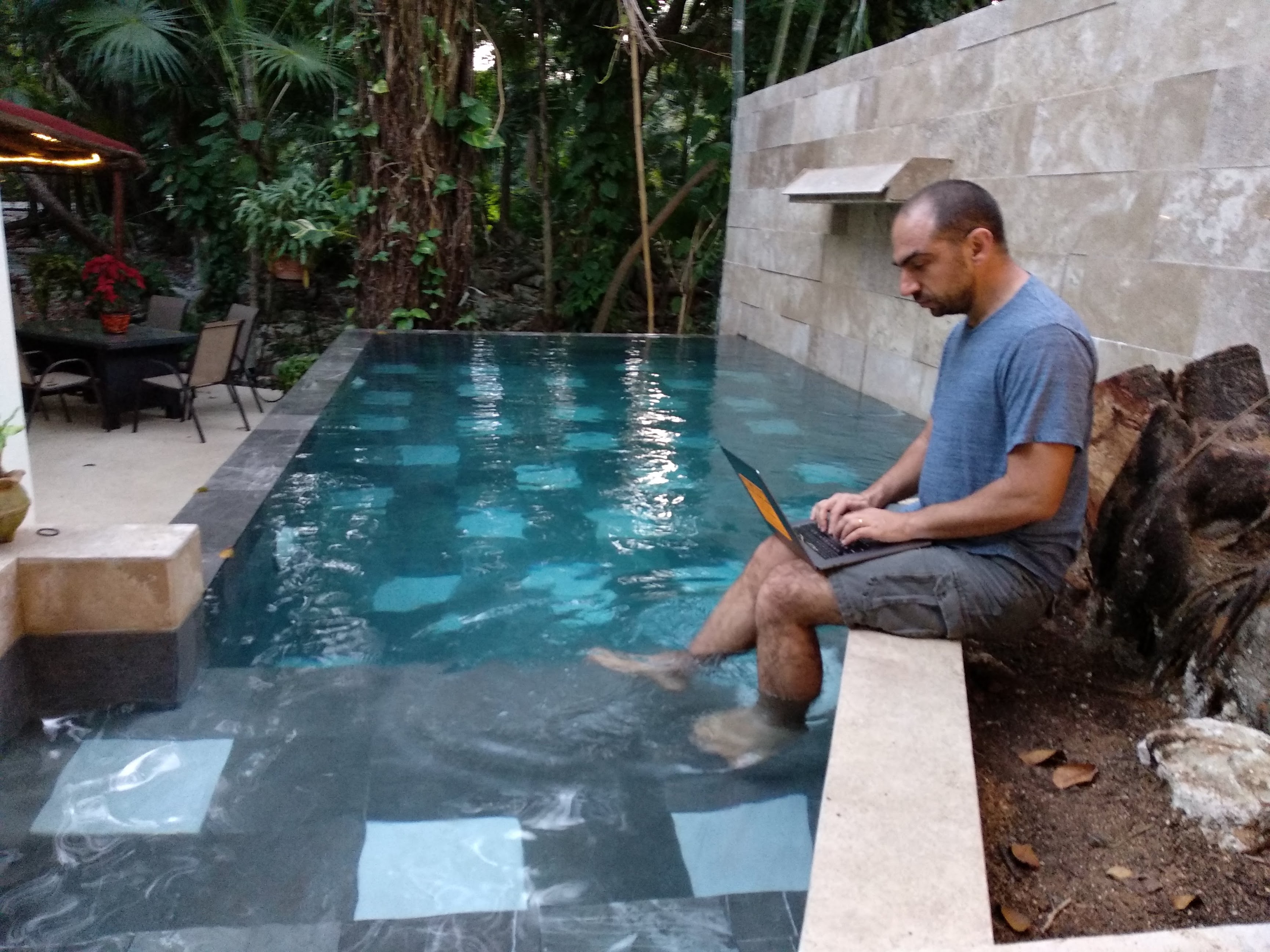
The single most important thing about remove 1:1 meetings
March 19, 2020The COVID-19 lockdown forced many organizations to a remote work mode. Recently, I spoke with three managers from three “conventional” companies and all the three told me how surprisingly efficient their 1:1 meetings became. This is how one of them described the situation “I prepare the agenda, we log in, boom, boom, boom, and we are done”.
The effectiveness of distributed work doesn’t surprise me, after all, I have been working in a distributed mode for about six years now. However, this super-efficiency has its own problems that one needs to know. Here’s the thing. We, humans, are social creatures. We depend on social interactions for our mental and physical well being. When people share the same physical office, they have enough social interactions “in-between” – in the hallway, next to the watercooler and in the parking lot. However, working in a distributed team creates isolation. That is why it is very important to start and end every meeting with a personal conversation. It is also important to make sure that the meeting feels as personal as possible. To do so, place the chat window below the camera, so that the person feels as if you are looking at them. During the conversation, resist the urge to check emails, read your Facebook feed or check my blog. Make the personal meeting personal, even if it’s remote.
I have been working in distributed teams for about six years. If you need advice on how to make the transition easier for your organization, I’ll be glad to give one (or two).

-

COVID-19 vs. influenza dataviz (an update)
March 18, 2020
Graph code: here.
-

An interesting solution of the data giraffe problem
March 18, 2020A data giraffe is a situation where a very prominent data point shades everything else. I learned this term from a post by Pini Yakuel and immediately liked it a lot.
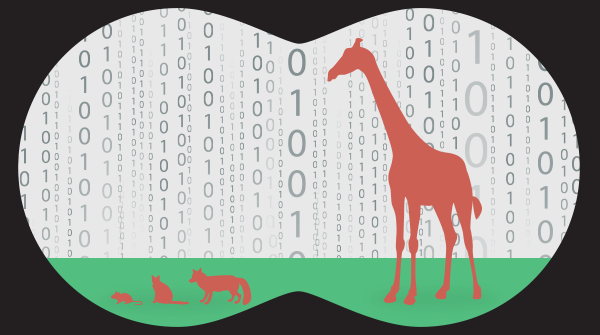 Taken from https://www.optimove.com/blog/beware-the-giraffes-in-your-data
Taken from https://www.optimove.com/blog/beware-the-giraffes-in-your-data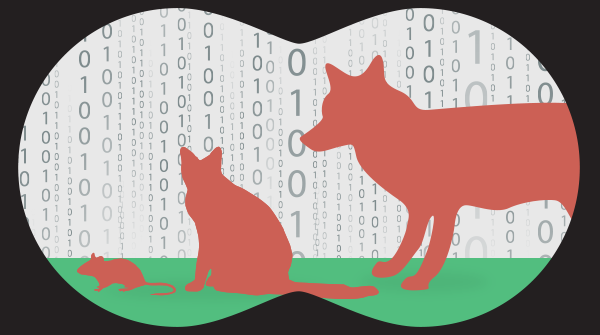 Taken from https://www.optimove.com/blog/beware-the-giraffes-in-your-data
Taken from https://www.optimove.com/blog/beware-the-giraffes-in-your-dataDealing with data giraffes is hard, especially when dealing with bar charts. Today I saw one interesting approach to this problem
Katherine S. Rowell is a co-funder of a Boston firm that specializes in data visualization. In December, she published apost dedicated to one of the most popular but also most abused graph types, the bar charts. One of the examples in her post demonstrates a nice treatment of data giraffes
 http://ksrowell.com/blog-visualizing-data/2019/12/18/bar-humbug/
http://ksrowell.com/blog-visualizing-data/2019/12/18/bar-humbug/In this example, Katherine draws the graph twice. The zoomed-out version shows the giraffes in all their glory, while the zoomed-in one gives the spotlight to the foxes, hyenas, and mice.
Also, note how these graphs respect the rules that every bar chart has to include the zero. -

Another piece of career advice
March 17, 2020Here’s another email that I got with the question about switching to the data science career
Hello, my name is X. I saw your blog, and to be honest, I said, “Wow, is this me :)” I’m a pharmacist 5th-grade student currently working on a project in computational drug design. I started programming, and I loved it. After that, I heard the term “Data Science” and started to do some research […]
Basically, I loved being on a computer and solving problems its a good career option for me (at least for now, you can’t predict future) my mom has a pharmacy I worked there (internship), and it is not for me (i am counting the time when I’m in a pharmacy.) so I have a few questions for you
I don’t have any degree in statistics or CS or something equivalent I am determined to learn these topics, but some people want to see the degree, and probably no one accept a pharmacist to a master degree in statistics (I also wish to do my Ms in computational drug design because, in the end, I don’t want to be a data scientist in social sciences or economics, at least for now, I want to use that knowledge in my field which is drugs and pharmaceuticals)
Ph.D. on Bioinformatics would help ? or Biostatistics ( is it easier for us to be accepted in biostatistics rather than statistics? To be honest, I don’t know the difference much, I took a biostatistics class, but it was just one semester and probably not enough for Ph.D. :))
Do I really need a degree in CS or statistics to be a pharmaceutical data scientist? I want to do my Ph.D. but also want to be realistic, it sounds amazing doing online masters in statistics while you are doing Computational drug design or Bİoinformatics Ph.D., but it is very hard and frustrating and also decrease your productivity in both fields.
I asked a lot of questions, sorry, but I have many :). You can reply when you have time. Thank you, and I loved your blog. I read and watched tons of things, but yours was the best suited for me because being a pharmacist, computational drug design, considering bioinformatics, it is all fits. By the way, I also considering cybersecurity (not working in a company but learning). I see that as a “martial arts of the future,” maybe I am wrong, but a person should know it to protect him/her self. Thank you again :)
Indeed, X’s background sounds very much like mine.
I’m not sure I have too much to add to what I already wrote here, in this blog. The only thing that I have to say is that in my biased opinion, a Ph.D. is something worth pursuing. The more time passes by, the more Ph.Ds there are, and the lack of a degree might be a problem in the future job market. On the other hand, there are many smart and rich people who claim that university degrees are a waste of time. Go figure :-)I hope that this helps.
-
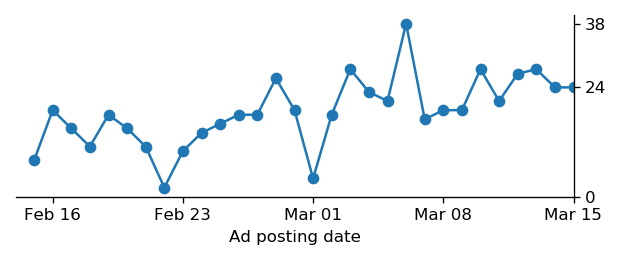
No signs (yet?) of the COVID-19 pandemic on StackOverflow job postings
March 16, 2020I suppose that you knot that THE software developement Q&A site has its own job board. I suspected that the Corona pandemic would lead to a sharp decrease in the number of job postings on that board. I scraped the data, and it looks like for now, there are no drastic changes in the amount of postings published in the last couple of days.

-

Tips for making remote presentations
March 11, 2020Before becoming a freelancer data scientist, I used to work in a distributed company. Remote communication, including remote presentations were the norm for me, long before the remote work experiment no one asked for. In this post, I share some tips for delivering better presentations remotely.
* Stand up! Usually, we stand up when we present in front of live audience. For some reason, when presenting remotely, people tend to sit. A sitting person is less dynamic and looks less engaging. I have a standing desk which allows me to stand up and to raise the camera to my face level. * If you can’t raise the camera, stay sitting. You don’t want your audience staring at your groin. * I always use a presentation remote control. It frees me up and lets me move more naturally. My remote is almost ten years old and I have a strong emotional attachment to it * When presenting, it is very important to see your audience. Use two monitors. Use one monitor for screen sharing, and the other one to see the audience. * Put the Skype/Zoom/whatever window that shows your audience under the camera. This way you’ll look most natural on the other side of the teleconference. * Starting a presentation in Powerpoint or Keynote “kidnaps” all the displays. You will not be able to see the audience when that happens. I export the presentation to a PDF file and use Acrobat Reader in full-screen mode. The up- and down- buttons in my presentation remote control work with the Reader. The “make screen black” button doesn’t. * I open a “lightable view” of my presentation and put it next to the audience screen. It’s not as useful as seeing the presenter’s notes using a “real” presentation program, but it is good enough.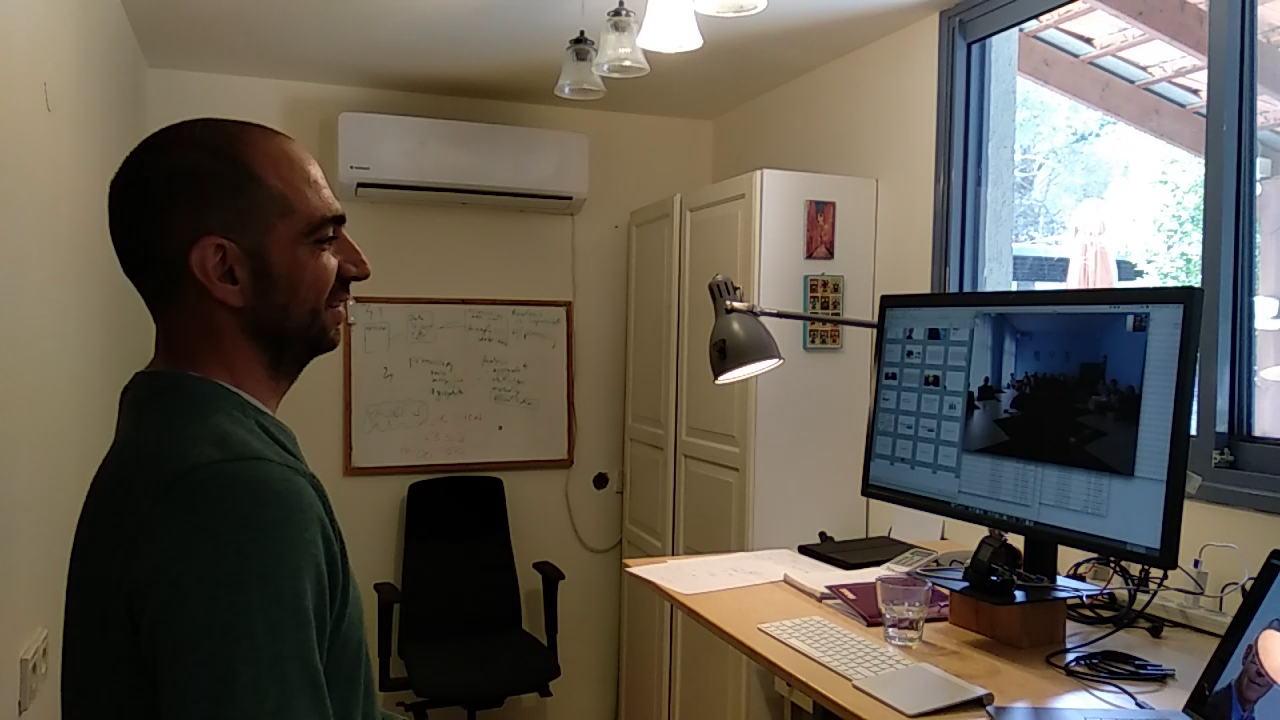
* Make a dry run. Ideally, the try run should be a day or two before the event, to make sure all the technical problems are fixed. * Go online at least five minutes before the schedule. Be in front of the camera, don’t let the audience stare at your empty room * Make sure nothing in your background will embarrass you. This risk is especially high if you present from home or a hotel. Nobody needs to see your bed during a business meeting.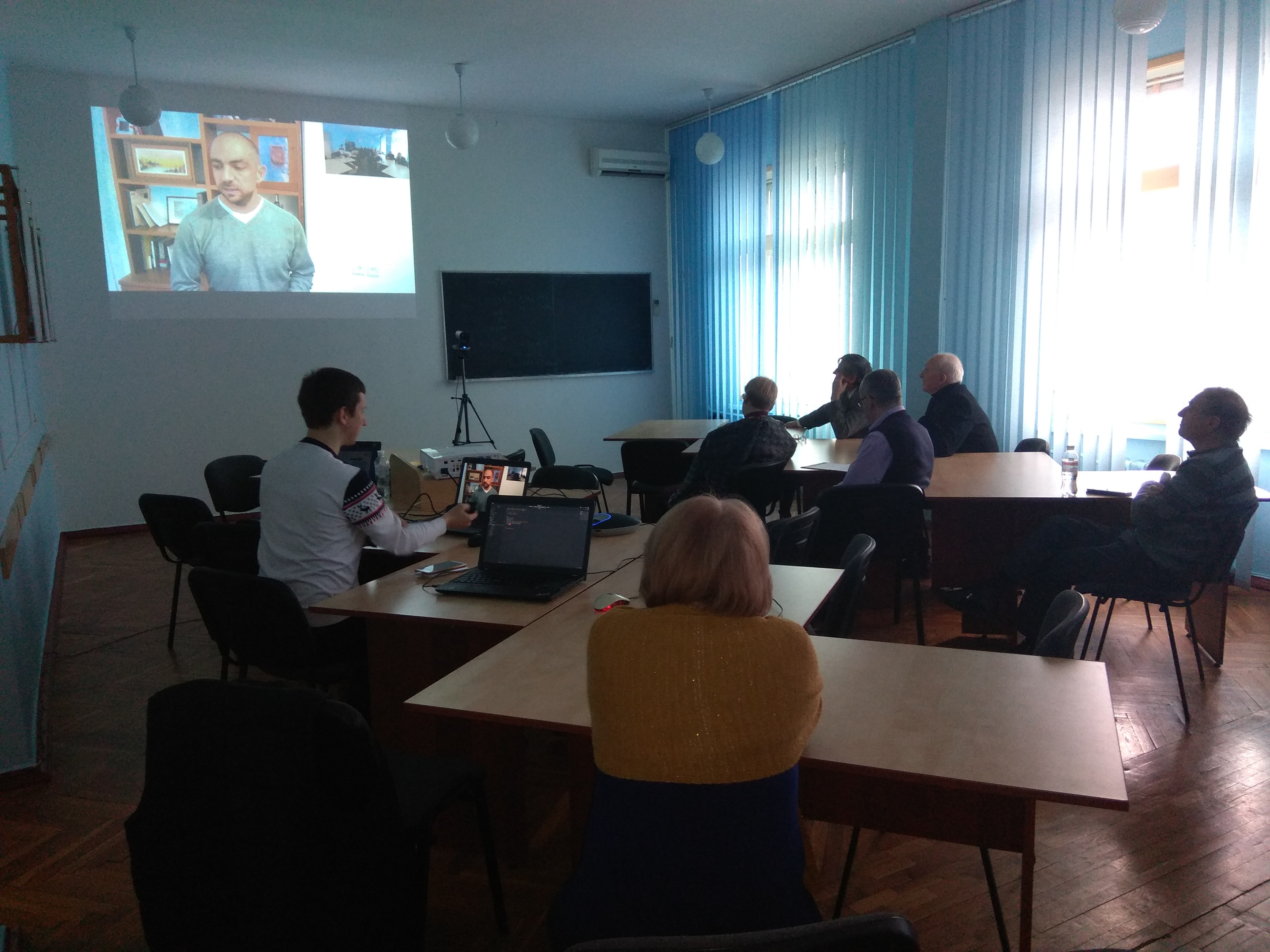
-

The cardiovascular safety of antiobesity drugs—analysis of signals in the FDA Adverse Event Report System Database
March 11, 2020I am glad and proud to announce that a paper which I helped to prepare and publish is available on the Nature’s group site.
The paper, The cardiovascular safety of antiobesity drugs—analysis of signals in the FDA Adverse Event Report System Database, by Einat Gorelik et al. (including myself) analyzes the data in the FDA Adverse Event Reporting System (FAERS). In this study, we found interesting and relevant safety information about the long-term safety of the antiobesity drug Lorcaserin. Due to the interdisciplinary nature of the paper, the review process took about a year. Interestingly enough, the FDA requested the withdrawal of Lorcaserin due to long-term safety issues but not the ones we studied.
-

Please leave a comment to this post
March 11, 2020Please leave a comment to this post. It doesn’t matter what, it can be a simple Hi or an interesting link. It doesn’t matter when or where you see it. I want to see how many real people are actually reading this blog.
[caption id=”attachment_media-15” align=”alignnone” width=”1880”]

Photo by Pixabay on Pexels.com[/caption]
-

תרשים עוגה כחלופה הולמת לגרף עמודות
March 10, 2020קראתי היום פוסט המדגים איך תרשימי עוגה יכולים להיות יותר יעילים מחלופות. מעניין שהפוסט משתמש פרלמנט הגרמני כמקרה דוגמה.
https://serialmentor.com/dataviz/visualizing-proportions.html -
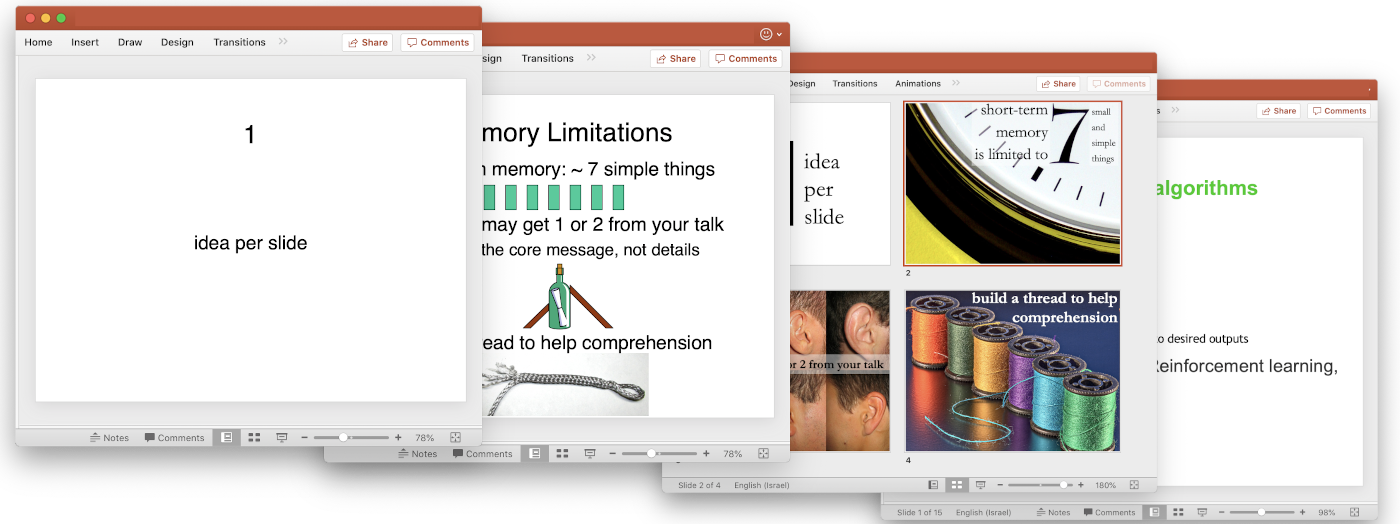
One idea per slide. It’s not that complicated
March 1, 2020A lot of texts that talk about presentation design cite a very clear rule: each slide has to contain only one idea. Here’s a slide from a presentation deck that says just that.
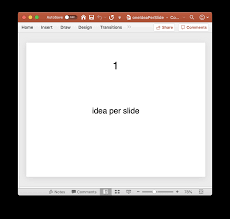
And here’s the next slide in the same presentation
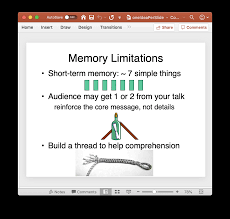
Can you count how many ideas there are on this slide? I see four of them.
Can we do better?
First of all, we need to remember that most of the time, the slides accompany the presenters and not replace them. This means that you don’t have to put everything you say as a slide. In our case, you can simply show the first slide and give more details orally. On the other hand, let’s face it, the presenters often use slides to remined themselves of what they want to say.
So, if you need to expand your idea, split the sub-ideas into slides.
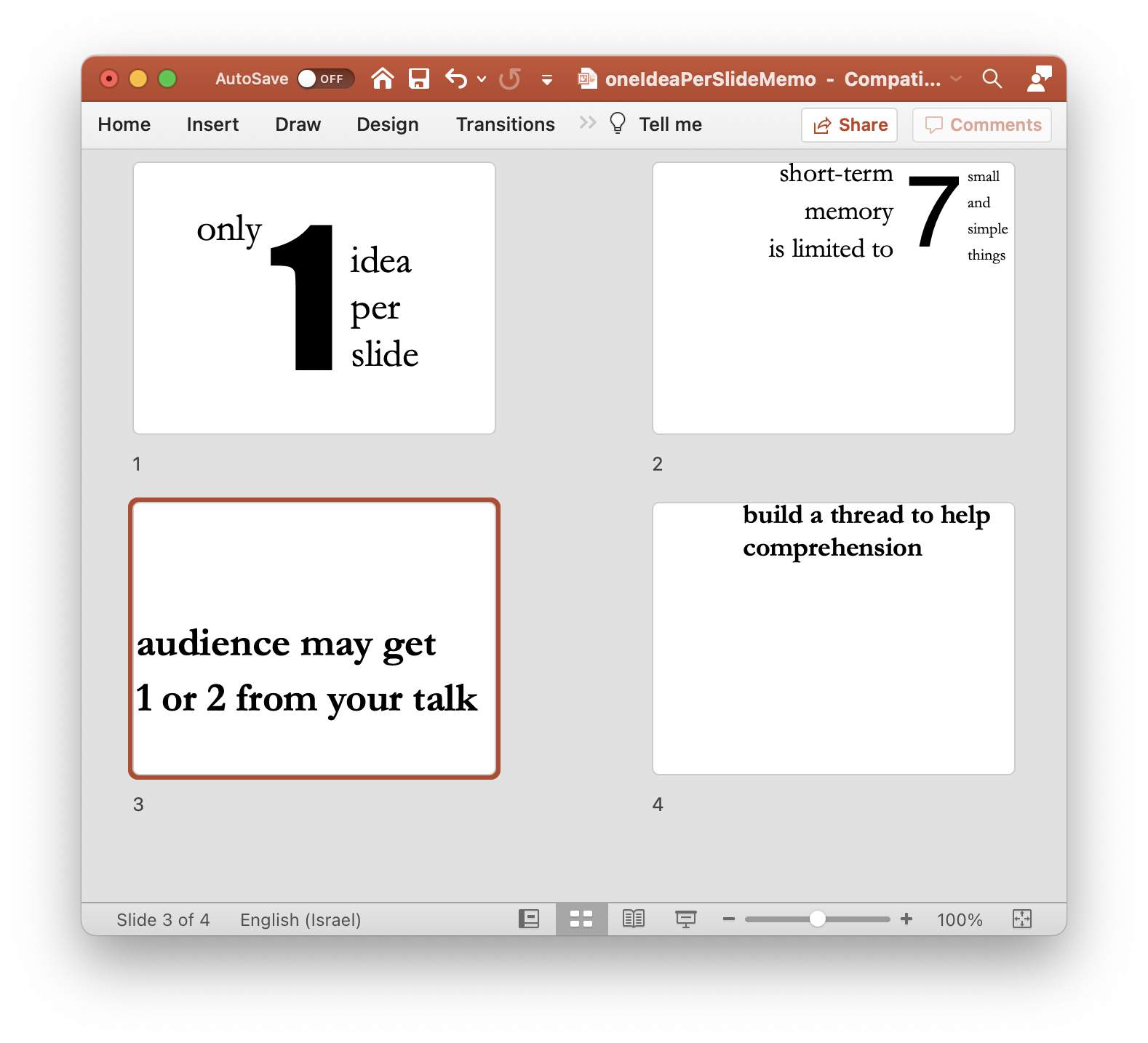
You can add some nice illustrations to connect the information and emotion.
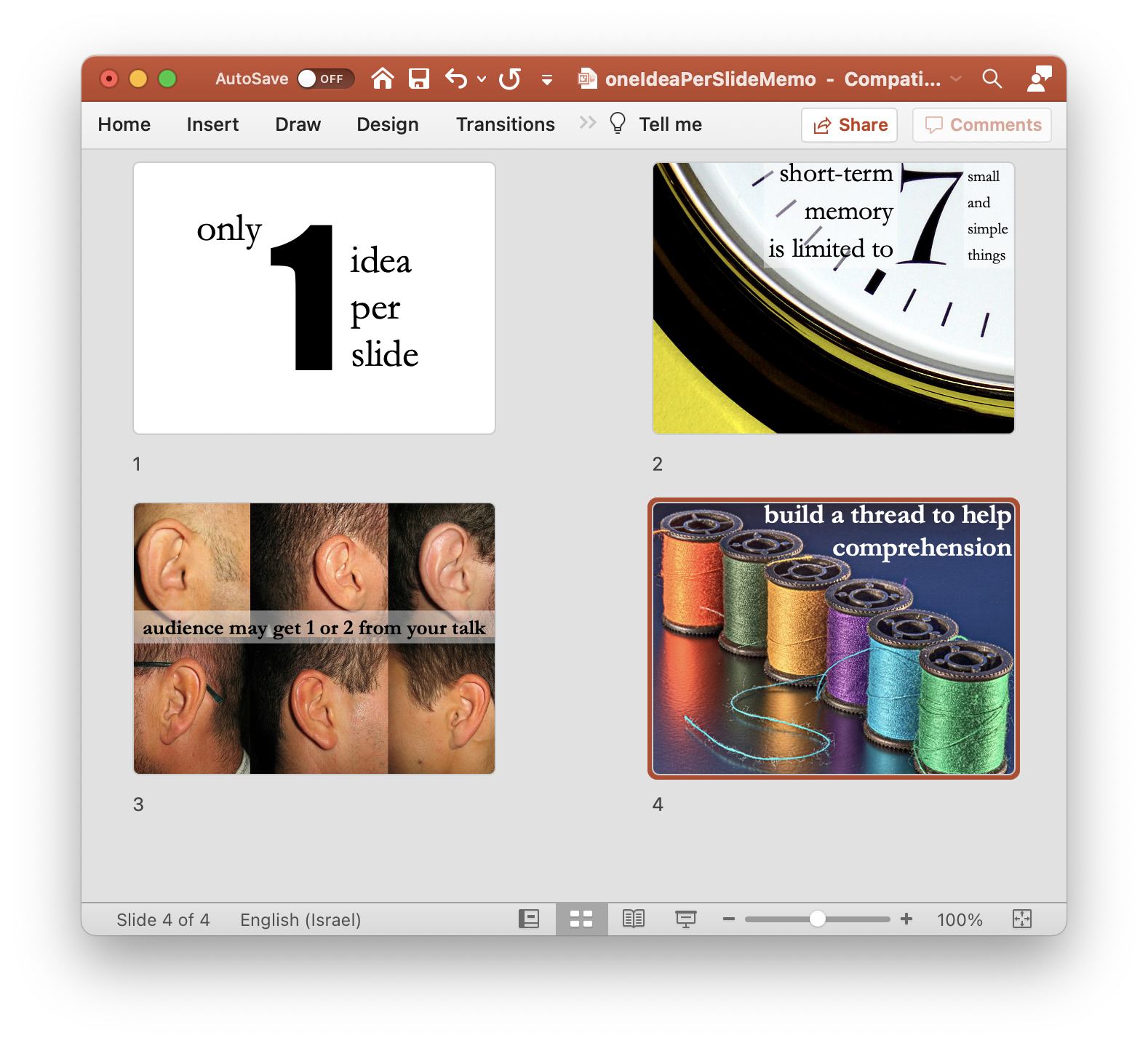
Making it more technical
“Yo!”, I can hear you saying, “Motivational slides are one thing, and technical presentation is a completely different thing! Also,” you continue, “We have things to do, we don’t have time searching the net for cute pics”. I hear you. So let me try improving a fairly technical slide, a slide that presents different types of machine learning.
Does slide like this look familiar to you?
First of all, the easiest solution is to split the ideas into individual slides.

It was simple, wasn’t it. The result is so much more digestible! Plus, the frequent changes of slides help your audience stay awake.
Here’s another, more graphical attempt

When I show the first slide in the deck above, I tell my audience that I am about to talk about different machine learning algorithms. Then, I switch to the next slide, talk about the first algorithm, then about the next one, and then mention the “others”. In this approach, each slide has only one idea. Notice also how the titles in these last slides are smaller than the contents. In these slides, they are used for navigation and are therefore less important. In the last slide, I got a bit crazy and added so much information that everybody understands that this information isn’t meant to be read but rather serves as an illustration. This is a risky approach, I admit, but it’s worth testing.
To sum up
“One idea per slide” means one idea per slide. The simplest way to enforce this rule is to devote one slide per a sentence. Remember, adding slides is free, the audience attention is not.
-
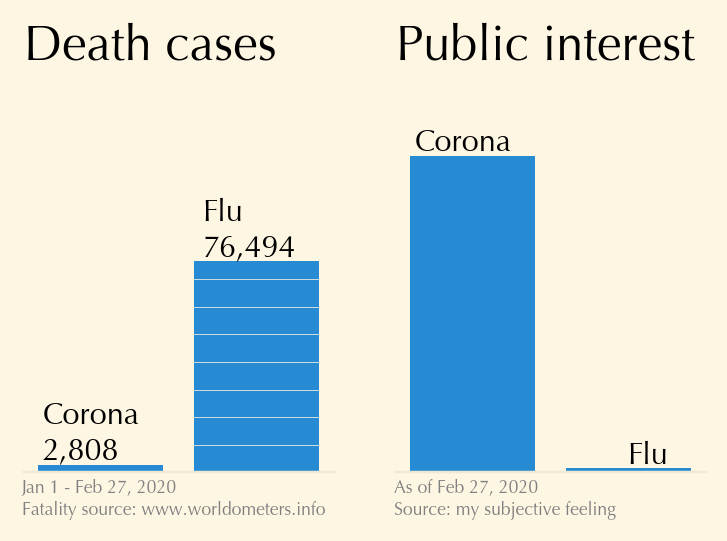
Corona virus vs flu, visualized
February 27, 2020
Graph code: here.
-
Three most common mistakes in data visualization
February 26, 2020People ask me for good intro video to data visualization. I tend to ask them to look for one of my lectures. To save the search, here’s one of the most relevant talks that I gave
-
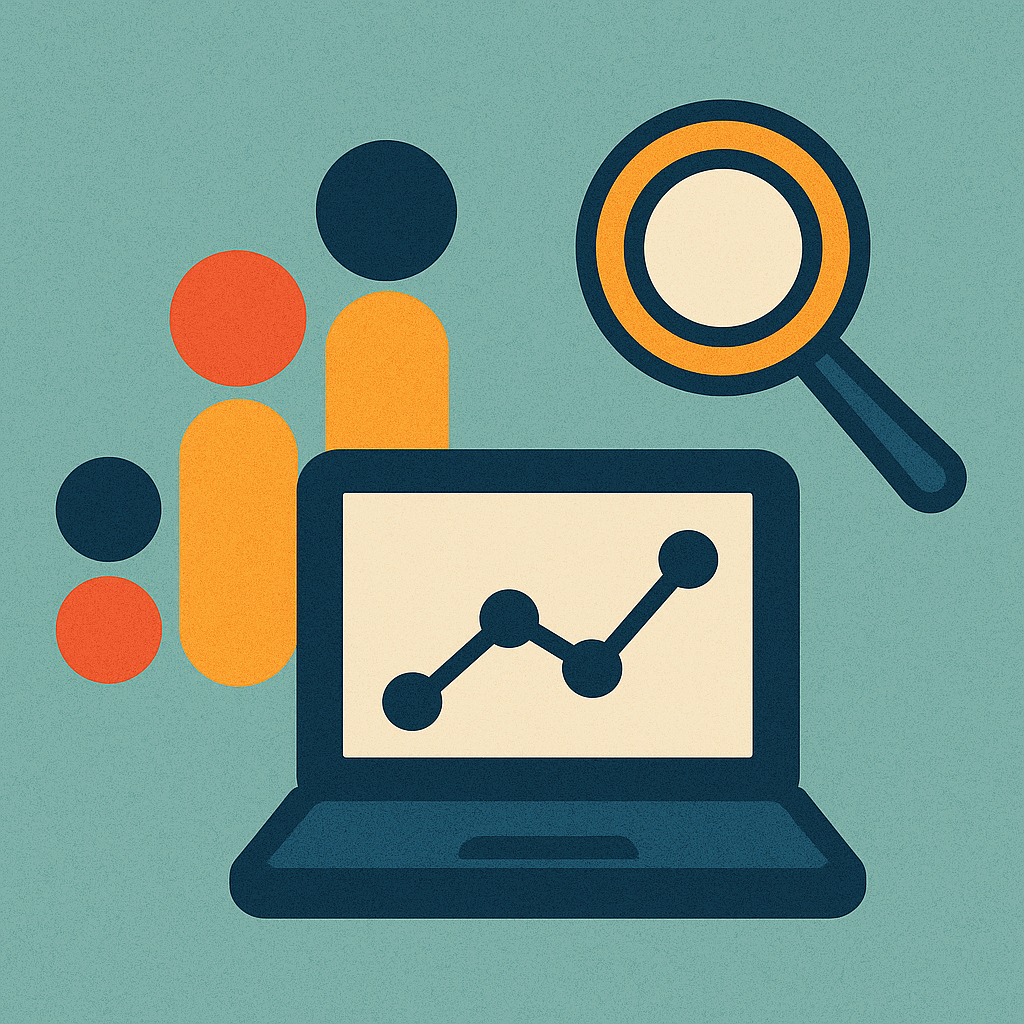
5 Basics of Consulting Success: Part 1
February 26, 2020Being a data science freelancer, and a long-time AnnMaria’s fan, I HAVE to repost here latest post on consulting success
Last week, I mentioned that successful consultants have five categories of skills; communication, testing, statistics, programming and generalist. COMMUNICATION Communication is the number one most important skill. All five are necessary to some extent, but a terrific communicator with mediocre statistical analysis skills will get more business than a stellar statistician that can’t communicate. Communication…
-

Career advice. A clinical pharmacist, epidemiologist, and a Ph.D. student wants to become a data scientist.
February 23, 2020From time to time, I get emails from people who seek advice in their career paths. If I have time, I write them an extended reply and if they agree, I publish the questions and my replies here, in my blog. Here’s one such email exchange. All similar pieces of advice, as well as other rants about a career in data science, can be found here.
“Hi Boris :)
My name is XXXXX. I came across your blog while searching for people with a mix of pharmacy and data science skillsets. Your blog has been so informative to me so far but I was compelled to write to you to ask for your advice.
I am a clinical pharmacist by background but decided to leave the clinical pharmacy to pursue public health. Whilst doing my MPH, I fell in love with epidemiology and statistics and am now doing a Ph.D. in biostatistics. Your blog has made me feel very happy that I made this career move <…> I feel better about my decision to leave the pharmacy and pursue a quant Ph.D. I have gone from pharmacy, to internships atas I wanted to pursue a career in and now I am thinking of data science in the tech industry…my background is a bit confusing!" In the past, I also felt that the pharmacy degree was confusing many potential employers, and since I wanted to leave the bio/pharma world and move to “pure data” positions, I omitted the B.Pharm title & studies from my CV. Ten years ago, the salaries in the bio sector, here in Israel, were much lower than the salaries in the “high tech” field. I think that today this situation is more or less normalized and that the people got used to the fact that a typical “data scientist” can have a very wide range of degrees.
“I was just wondering if I could get your opinion on the three questions I have. 1. I work part-time as a clinical pharmacist to not forget my clinical skills. What do you think about the future of the pharmacy career overall?”
 My last shift as a pharmacist
My last shift as a pharmacistThis is a huge question and I don’t have answers to it. Moreover, the answer depends heavily on legal regulations in the given country. I say that if you enjoy treating people, and can afford this time, why not? I, personally, was a very lousy pharmacist :-) so I was very happy to leave the pharmacy.
“I am wondering if I should keep up my pharmacist title or pursue data science full-time.”
Again, it depends. For many years, I didn’t have my pharmacy title in my CV because it felt unrelated to what I was doing. It was also a nice icebreaker to tell people with whom I worked “by the way, I’m a pharmacist” and it was fun to see their reactions. If I were you, I would ask two-three HR people or people who recruit employees what they think. Different countries may behave differently.
“2. At what point can someone call themselves a data scientist?”
In my opinion, as long as you are comfortable enough to call yourself a data scientist, you are good to go. Note that unlike many people who got their data science “title” after taking some online courses, you already have a very strong theoretical base. Not only are your Master’s and the future Ph.D. degree relevant to data science, but they also give you strong and unique advantages.
“I am looking at DS jobs at large tech companies. I am not sure how qualified and experienced I have to be for these jobs. I code in R using regression, clustering and time series methods and I am quite fluent in this language. I have just started to learn ML algorithms. I have a basic foundation in Python and SQL. I use Tableau for visualization and love communicating my research at any opportunity I get. I was wondering…how good do I have to be able to apply to DS jobs? What are the methods that data scientists use mostly? Would I be able to learn on the job?”
It sounds like a good combination of techniques. I am not recruiting but if I would, I would definitely like this list of skills. Personally, I don’t like R too much and prefer Python. But once you program one language, moving to another one is a doable task. As to what methods do data scientists use mostly, this hugely depends on your job. Most of my time, I clean data and write wrapper functions around known algorithms. The task that I have been facing during my professional life required regression, classification, network analysis. I never did real deep learning stuff, but I know people who only do deep learning for image and sound analysis. Also, in many cases, the data science part takes only 10% of your time because the “customer” doesn’t care about an algorithm, they want a solution. See this post for a nice example.
“3. If you had the opportunity to start your career again, say you were in your early twenties, what would you study and why? What advice would you have for your younger self? I would be so keen to hear what you think.”
It’s a philosophical task which I never like doing. What is done is done. The fact that I am a pretty successful data scientist may mean that I took the right decisions or that I was super lucky.
-

Not a wasted time
February 19, 2020Being a freelancer data scientist, I get to talk to people about proposals that don’t materialize into projects. These conversations take time, but strangely enough, I enjoy them very much, I also find these conversations educating. How else could I have learned about a business model X, or what really happens behind the scenes of company Y?

-

This how scientific satisfaction looks like
February 18, 2020I can’t elaborate yet, but in case you wondered how scientific satisfaction looks like, here’s a perfect illustration.

Stay tuned
-

Which coffee is this?
February 17, 2020Gilad Almosnino is an internationalization expert. I’m reading his post “Eight emojis that will create a more inclusive experience for Middle Eastern markets,” in which he mentions “Turkish or Arabic Coffee,” which reminded me of my last visit to Athens. When, in one restaurant, I asked for a Turkish coffee, the waiter looked at me harshly and said: “It’s not Turkish coffee; it’s Greek coffee!”
-
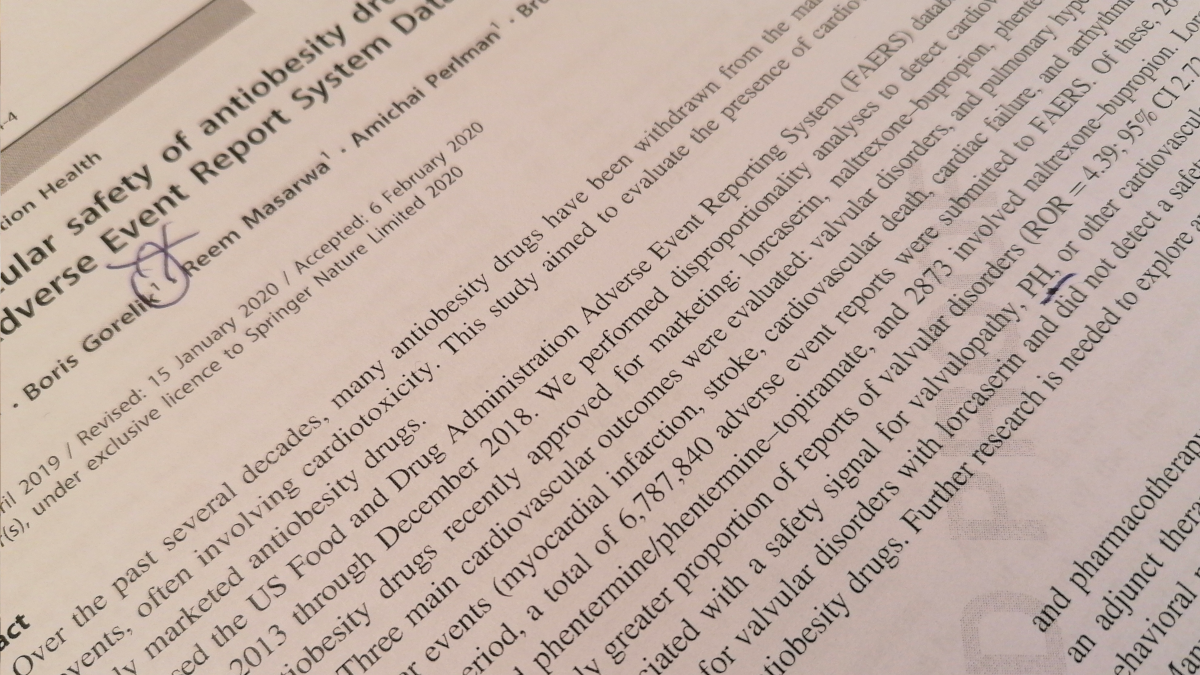
Further Research is Needed
February 17, 2020Do you believe in telepathy? Yesterday, I submitted final proofs of a paper in which I actively participated. During the proofreading, I noticed that our abstract ends with “further research is needed” and scratched my head. I submitted the proofs and then then, I saw this pearl in my blog feed
- Older posts Newer posts



